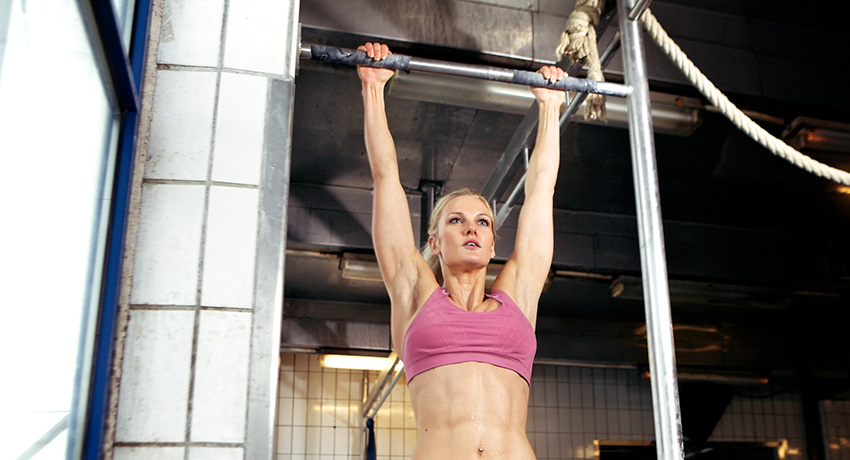Ask the Expert: Why is it So Hard For Women to Do Pull-Ups?

This is as far as we get when attempting a pull-up. Photo via Shutterstock
I remember the sunny spring day in seventh-grade during P.E. class when it was time for the fitness tests. I knew I’d ace it since I played sports my whole life. Laps around the track, check. Sprints, check. Sit-ups, easy. Push-ups, done. Chin-ups, what-else-you-got? Then came time for the pull-ups. “That’s zero pull-ups for Melissa,” the teacher yelled out to the whole class. Zero? Two decades later, I still can’t do one. And I’m not alone. Even after three months of CrossFit, I can barely do a kipping pull-up without a box below me.
So we asked a trainer:
“Why is it so hard for women to do pull-ups?”
The answer comes from Kristen Mercier, a personal trainer, manager at Corpbasics in Somerville, and author of the Be Fit With Kristen blog.
Here is her answer:
“A pull up it involves pulling mass over a certain distance. Doing this against gravity isn’t easy, it takes a lot of energy and musculature. Women on the whole tend to have higher percentages of body fat than men. It all comes down to testosterone. Women don’t produce as much of it and as a result they have less lean muscle mass. Contrary to what some believe, this doesn’t mean they can’t do one, it just means they have to work harder at it.
Sometimes even the fittest of women can’t do a pull up and not because they aren’t strong enough but because they haven’t trained their bodies to do one. Similar to sports, your training should be functional, meaning you train with the same movements you expect your body to excel at. This is called specificity of training. It may take a while but your body will eventually learn to pull your weight.
The best place to start is with pull-ups, assisted of course. You can assist yourself with a pull-up by using your feet as leverage or using the assisted pull-up machine at the gym. You’ll also want to do some strength training that focuses on your ‘pull muscles’ i.e. your back and biceps.”

